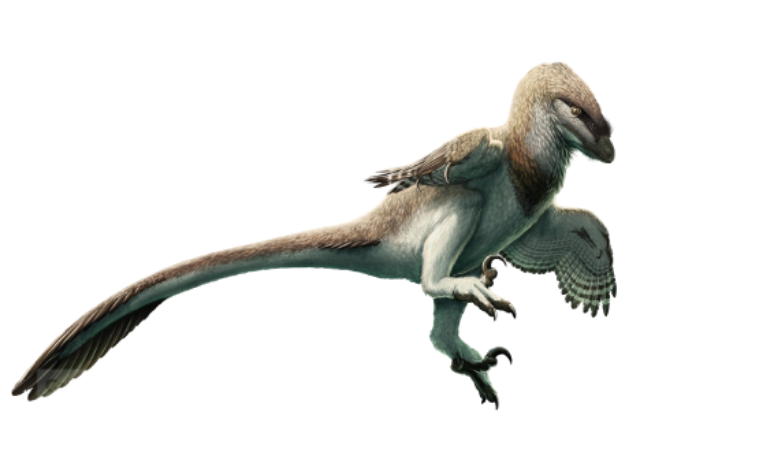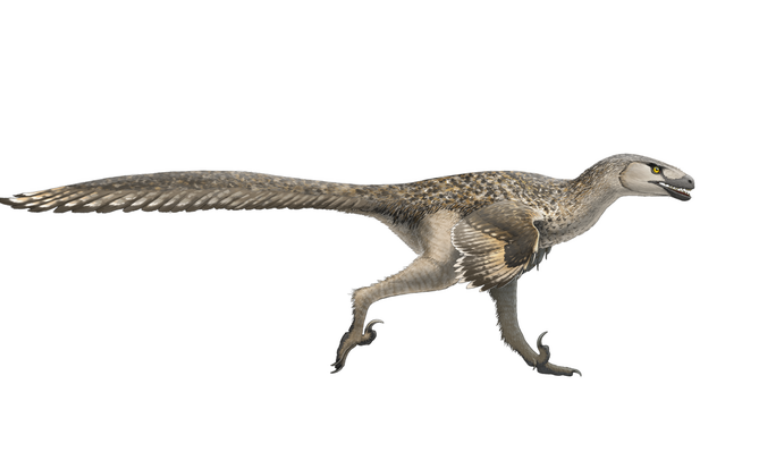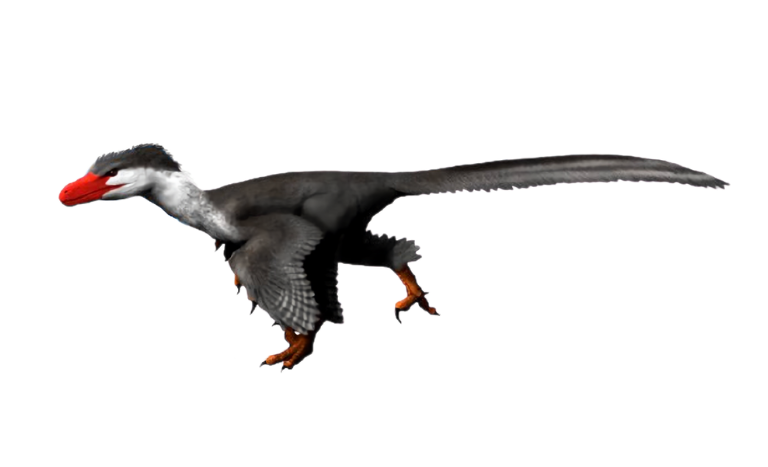Top 10 Deadliest Raptors (Dromaeosaurs) Ever Existed, Ranked - Animalassic
Before we get into the deadly raptors, have a look at
Brief Introduction to Raptors
Dromaeosaurs popularly, known as raptors are a group of feathered theropod dinosaurs. The name "dromeosaur" is derived from the Greek words "dromeus" (runner) and "saûros" (lizard). Their body plan consists of a relatively large skull, serrated teeth, a narrow snout (except one species), forward-facing eyes indicating some degree of binocular vision, a large curved talon on the second toe of the feet known as the sickle claw, and slender tails.
×
Important Note:
No one accurately knows how much deadly a certain raptor species was. All raptors are ranked based upon assumptions made, taking into account their size, characteristics, prey's size, and limited data available from fossils, so don't get offended about rankings given to the raptors.Let's begin !
10. Velociraptor
 |
Name meaning: "Swift plunderer"
Est. length: 2.07 m
Est. height at hip: 0. 5 m
Est. weight: 15 - 19 kg
Unlike what we saw in the movie Jurassic Park, the velociraptor was not that big and wasn't even bald. Its true size was similar to that of a large turkey, yet even at that size, in packs with the speed of 30 km/h and sharp sickle claws, velociraptors were deadly enough to hunt down prey like protoceratops.There are two Velociraptor subspecies, the V. mongoliensis, and V. osmolskae.
9. Dromaeosaurus
Name meaning: "Swift running lizard"
Est. length: 2 m
Est. height at hip: 0. 6 m
Est. weight: 15 - 19 kg
Being about the same size as a velociraptor and having the same sized sickle claw, what features make the dromaeosaurus deadlier lies in its skull. The skull of the dromaeosaurus was relatively large which had nine robust teeth on each maxilla which provided the dromaeosaurus three times stronger bite force than the velociraptor.
The bigger skull also featured a bigger nasal cavity, implying a better sense of smell.
8. Linheraptor
 |
Name meaning: "Linhe's plunderer"
Est. length: 2.10 m
Est. height at hip: 0. 7 m
Est. weight: 25 kg
dromaeosaurs, the linheraptor, was a Mongolian dinosaur that lived during the Late Cretaceous named after the district of Linhe in Inner Mongolia, China, where the specimens were discovered.
According to the researchers, Linheraptor was approximately 8 feet long and would have weighed nearly 25 kgs. At that size, the linheraptor would have been a fast and agile predator. Its diet and physical features were very similar to the velociraptor though its closest relative was Tsaagan.
7. Yurgovuchia
 |
Name meaning: "Coyote"
Est. length: 2.5 m
Est. height at hip: 0. 8 m
Est. weight: 35 kg
The name Yurgovuchia was derived from the Ute term yurgovuch, which means coyote, despite Yurgovuchia being roughly double the size and weight of an average coyote while still called coyote sized by many sources. (See yourself: img1, img2, img3)
When yurgovuchia fossils were discovered, it was considered to be a juvenile
Name meaning: "Diné Or Navajo hero"
Est. length: 2.5 - 3 m
Est. height at hip: 1 m
Est. weight: 25 - 40 kg
Even for a raptor, the dineobellator was an exceptionally agile and specialized predator.
Their unique skeletal features suggest that the Deinobellator was capable of greater flexion at the tail base, limbs and had tighter grip strength in manual angudals (hand claws), which would have provided them an upper hand among other similar-sized theropods.
Their unique skeletal features suggest that the Deinobellator was capable of greater flexion at the tail base, limbs and had tighter grip strength in manual angudals (hand claws), which would have provided them an upper hand among other similar-sized theropods.
5. Deinonychus
 |
Name meaning: "Terrible claw"
Est. length: 3.4 m
Est. height at hip: 0. 9 m
Est. weight: 73 - 100 kg
The raptor was named and became well known because of its unusually large, sickle-shaped talon (sickle claw) on the second toe of each hind foot, which served as its primary weapon of predation as it had a wimpy bite relative to its size.
Along with claws, hunting in groups, quick speed, being twice as heavy and long as its Mongolian cousin, would have allowed the deinonychus to terrorize the plant-eating and other same-sized dinosaurs.
4. Austroraptor
 |
Name meaning: "Southern plunderer"
Est. length: 5.5 m
Est. height at hip: 1.3 m
Est. weight: 300 kg
Their bodily features were a lot different than those commonly found among the dromeosaurs. Its forearms were proportionately smaller, which among the dromeosaurs tend to be well developed, had a narrower skull with conical teeth rather than more common serrated teeth, suggesting that the austroraptor were more adept for hunting a specific type of prey.
3. Achillobellator
 |
Name meaning: "Achilles hero"
Est. length: 5.5 - 6 m
Est. height at hip: 1.6 m
Est. weight: 250 - 348 kg
Achillobator's size and appearance were very similar to the velociraptor from Jurassic Park and were even from Mongolia. A Reddit user has an accurate fan hypothesis that the JP's velociraptors were achillobator (here's the theory).
2. Dakotaraptor
 |
Name meaning: "Dakota's plunderer"
Est. length: 5.5 - 6 m
Est. hip height: 1.8 m
Est. weight: 350 kg
The Dakotaraptor was around 17 feet long, 240 kg heavy, had 9.5 inch long retractable sickle claws, and still moved like an agile sprinter with the speed of 30 - 40 mph.
Their skull anatomy evidence that the raptor had a relatively large brain meaning, it's very likely that the Dakotaraptors were smart and may even have hunted in packs making them, even deadlier.
1. Utahraptor
 |
Name meaning: "Utah's plunderer"
Est. length: Up to 7 m
Est. height at hip: 1.9 m
Est. weight: Approx. 459 kg
• Utahraptor is the largest raptor found to date with, the head to tail length of 7 m and weighing up to 420 kg.
• Utahraptors were robustly built and had sickle claws about twice the size of the sickle claw of the deinonychus, specialized for cutting through the flesh.
• Raptor's skull, rather than like a quick robber, was built more like a small tyrannosaur, implying that the dinosaur was capable of a powerful bite.
• Their cranial cavity and eye socket size, suggest that they had a reasonably large brain and eyes implying, keen eyesight.






.webp)
.webp)

Comments
Post a Comment